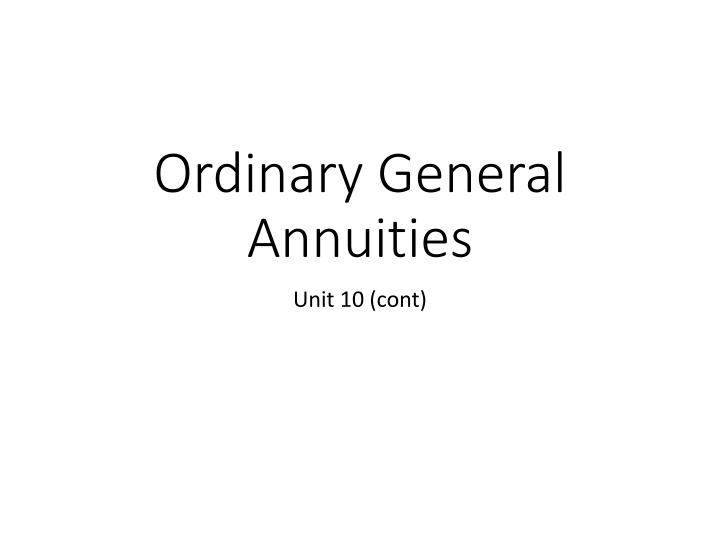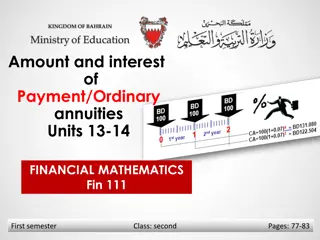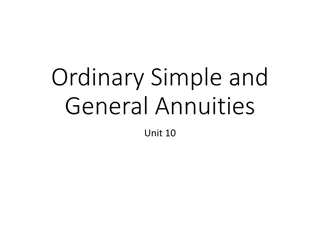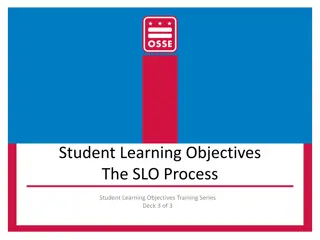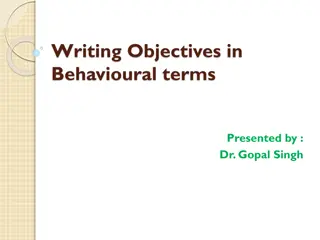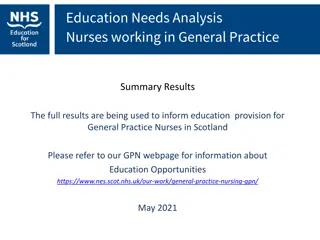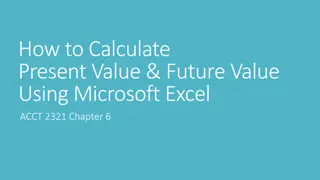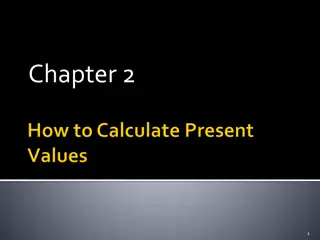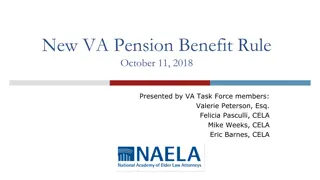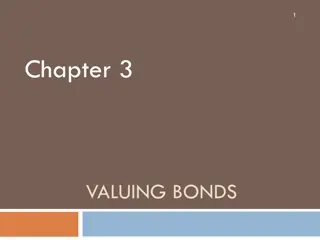General Annuities Learning Objectives
Compute future value, present value, payments, periods, and interest rate for ordinary general annuities. Understand the unique characteristics and calculations involved in ordinary general annuities.
Download Presentation

Please find below an Image/Link to download the presentation.
The content on the website is provided AS IS for your information and personal use only. It may not be sold, licensed, or shared on other websites without obtaining consent from the author.If you encounter any issues during the download, it is possible that the publisher has removed the file from their server.
You are allowed to download the files provided on this website for personal or commercial use, subject to the condition that they are used lawfully. All files are the property of their respective owners.
The content on the website is provided AS IS for your information and personal use only. It may not be sold, licensed, or shared on other websites without obtaining consent from the author.
E N D
Presentation Transcript
Ordinary General Annuities Unit 10 (cont)
Learning Objectives Compute the future value (or accumulated value) for ordinary general annuities Compute the present value (or discounted value) for ordinary general annuities Compute the payment for ordinary general annuities Compute the number of periods for ordinary general annuities Compute the interest rate for ordinary general annuities Compute future value and present value for constant- growth annuities
Ordinary General Annuity When the length of the interest conversion period is different from the length of the payment interval, these annuities are called general annuities In Canada, home mortgages are usually compounded semi-annually and payments are often made on a monthly, semi-monthly, or weekly basis The quoted interest rates are not always quoted so
Ordinary General Annuity Ordinary means that the payments are made or received at the end of each payment interval General means that the payment interval and interest conversion intervals are different
Ordinary General Annuity There is a relationship between payment interval and interest conversion period The number of interest conversion periods per payment interval, designated by the letter c, can be determined from the following ratio: ? =??? ?????? ?? ???????? ?????????? ??????? ??? ???? ??? ?????? ?? ???????? ??? ????
Typical Conversion Periods If the interest conversion period is longer than the payment period, each payment interval contains only a fraction of one conversion period In this case, c has a fractional value If the interest conversion period is shorter than the payment period, each payment interval contains more than one conversion period In this case, c has a value greater than 1
Equivalent Rate of Interest Per Payment Period p To change the given rate of interest to the equivalent interest per payment period p of the problem, use the following formula: ? = 1 + ?? 1
Practical Solutions For general annuities we will use the calculator to set up the payment and interest conversion periods We set c/y as different than p/y (note on calculators set p/y first then c/y) After that solving problems is similar to ordinary simple annuities
Practice Questions - FV Q1. Tristian saves $100 at the end of each week and deposits the money in an account paying 4% compounded monthly A. How much will she accumulate in 8 years? B. How much of the accumulated amount is interest? Q2. At the end of each quarter, Bruce Machinery pays $7000 into an account to fund a charity event. If interest earned on the account is 0.95% compounded annually, how much would the account balance be in five years?
Practice Questions - PV Q3. The law firm of Blitzen and Donner borrowed money to purchase equipment. The loan is repaid by making payments of $824.37 at the end of every three months over nine years. If interest is 4.3% compounded annually, what was the original loan balance? Q4. Peter Puck, a popular hockey player, has been offered a two year salary deal. He can either accept $2,200,000 now or accept monthly amounts of $120,000 payable at the end of each month. If money can be invested at 5.7% compounded quarterly, which option is the better option for Peter and by how much?
Practice Questions - Payments Q5. How much must be deposited at the end of each quarter for 12 years to accumulate to $14,000 at 8% compounded monthly? Q6. Jordyn bought a car priced at $11,300 for 15% down and equal monthly payments for four years. If interest is 8% compounded semi-annually, what is the size of the monthly payment?
Practice Questions Number of Payments Q7. For how many years will Prasad make payments on the $48,000 he borrowed to start his machine shop if he makes payments of $9400 at the end of every three months and interest is 8.08% compounded semi-annually? Q8. Mr. Musk accumulated $220,000 in an RRSP. He converted the RRSP into a RRIF and started to withdraw $7500 at the end of every three months from the fund. If interest is 6.75% compounded monthly, for how long can Mr. Musk make withdrawals?
Practice Questions - Interest Q9. A car valued at $11,400 can be purchased for 10% down and monthly payments of $286.21 for three and a half years. What is the nominal rate of interest compounded annually? Q10. A vacation property valued at $350,000 was bought for 15 payments of $32,000 due at the end of every 6 months. What nominal annual rate of interest compounded monthly was charged? What was the effective interest rate?
